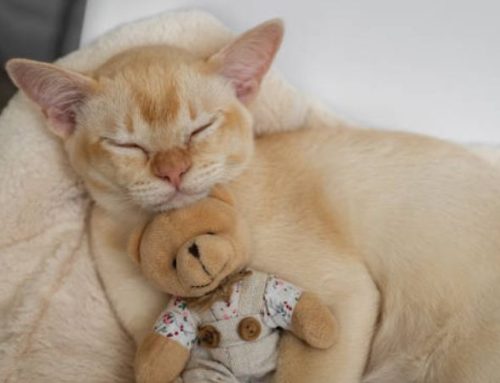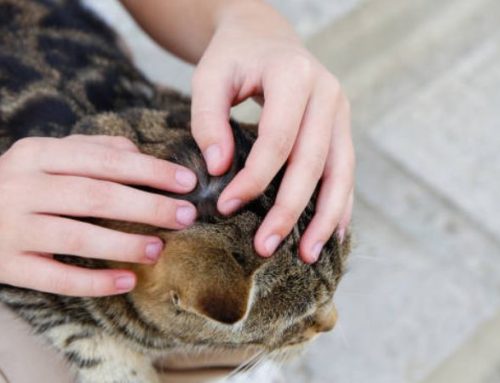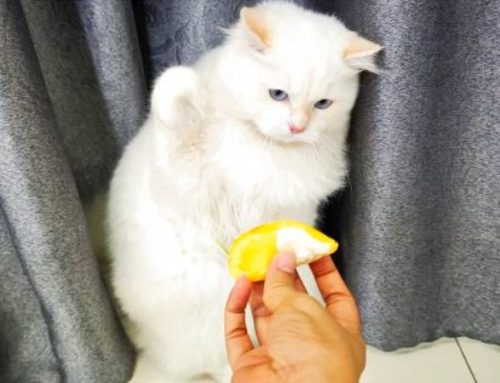Checking the litter box might not be the most enjoyable task, but it’s one of the easiest ways to keep an eye on your cat’s health. Your cat’s stool should generally stay consistent unless there’s been a recent change in diet. If you notice blood in your cat’s poop, it can be alarming—but don’t worry. Nexus-Pets will help you understand what it means, the possible causes, and how to care for your feline friend.
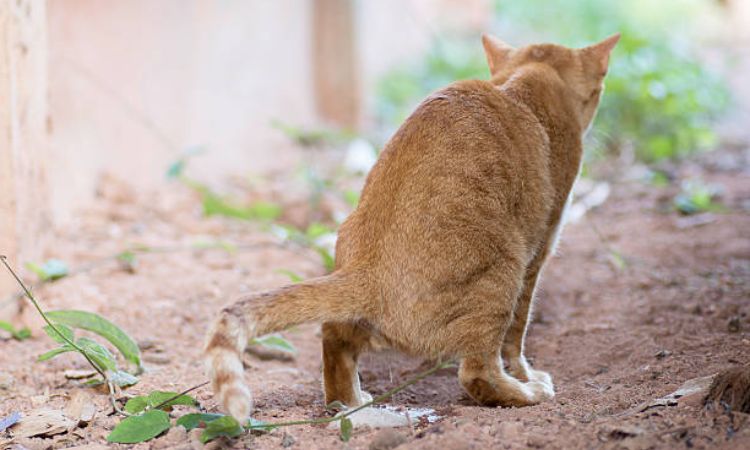
Spotting the Signs: What Blood in Cat Poop Looks Like
Seeing blood in your cat’s stool can be worrying, but understanding what it looks like helps you figure out the cause. Bright red blood (hematochezia) usually comes from the lower digestive tract, like the colon, rectum, or anus, while dark, tarry stool (melena) often points to bleeding higher up, such as the stomach or small intestine.
Other symptoms may appear alongside blood, including diarrhea, vomiting, straining, lethargy, or reduced appetite. Keeping track of your cat’s stool color, consistency, and frequency is essential—these details give your vet clues to determine whether the issue is minor or needs urgent attention. Careful observation can make a big difference in ensuring your cat gets timely and proper care.
Common Causes of a Cat Pooping Blood
Cats may pass blood in their stool for a variety of reasons, ranging from minor digestive upsets to more serious medical conditions. Understanding the possible causes can help you determine when to monitor at home and when to seek veterinary care.
1. Digestive Issues
Digestive disturbances are a frequent reason for blood in cat stool, often linked to diet or gut irritation.
- Dietary intolerance or food allergies: Certain proteins or ingredients can inflame the intestines, resulting in bloody stools.
- Sudden diet changes: Abruptly switching your cat’s food can upset their gastrointestinal tract.
- Constipation and straining: Hard stools or difficulty passing stool can scratch the intestinal lining or anal tissue, leading to small amounts of blood.
2. Infections and Parasites
Gut infections and parasites can damage the intestinal lining and cause bleeding.
- Intestinal parasites: Roundworms, hookworms, Giardia, and other parasites may lead to irritation and blood in the stool.
- Bacterial or viral infections: Infections like salmonellosis or feline panleukopenia (FPV) can inflame the digestive tract and trigger bleeding.
3. Inflammatory and Chronic Conditions
Chronic inflammation of the gut or related organs can result in bloody stools.
- Inflammatory Bowel Disease (IBD): Persistent inflammation of the intestines may cause bleeding along with diarrhea and discomfort.
- Colitis: Inflammation of the large intestine often produces fresh blood and mucus.
- Pancreatitis: Inflamed pancreas can trigger digestive upset and occasionally bloody diarrhea.
4. Trauma and Physical Problems
Physical injuries or issues around the anus can also result in blood in the stool.
- Anal gland problems: Infection or blockage of the anal glands can cause bleeding near the anus.
- Rectal injury: Trauma from scratches, abrasions, or accidents may lead to fresh blood.
- Ingestion of foreign objects: Sharp bones or other items swallowed can damage the digestive tract lining.
5. More Serious Causes
Some conditions require immediate veterinary attention due to potential severity.
- Intestinal polyps or tumors: Both benign and malignant growths may bleed, causing fresh or digested blood.
- Kidney or liver disease: Organ dysfunction can indirectly lead to gastrointestinal bleeding or clotting problems.
- Blood clotting disorders: Cats with clotting issues may bleed easily into the digestive tract, sometimes severely.
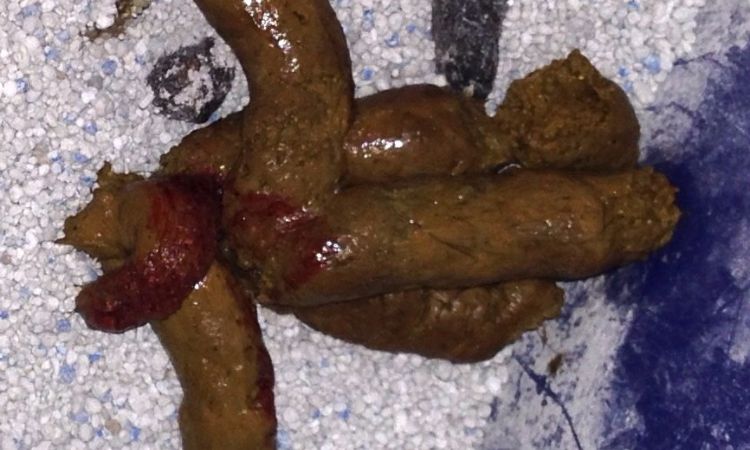
Cat feces contains blood
When to Worry: Red Flags That Require Immediate Vet Care
While a small streak of blood in your cat’s stool may not always signal a serious problem, there are certain warning signs that demand prompt veterinary attention. Recognizing these red flags early can make a critical difference in your cat’s health.
- Large amounts of blood in the stool: Significant bleeding—whether bright red or black and tarry—may indicate a serious issue in the digestive tract.
- Repeated vomiting or diarrhea: Ongoing vomiting or diarrhea, especially if blood is present, can quickly lead to dehydration and nutrient loss.
- Loss of appetite or rapid weight loss: A sudden refusal to eat or noticeable weight loss can signal underlying illness that requires urgent evaluation.
- Lethargy, dehydration, or pale gums: Weakness, extreme tiredness, sunken eyes, or pale/blue gums are signs your cat may be in distress and need immediate care.
- Kittens, seniors, or cats with pre-existing health conditions: These cats are particularly vulnerable. Even mild symptoms can escalate quickly, making timely veterinary intervention essential.
If you notice any of these signs in your cat—especially in combination—contact your veterinarian immediately. Early action can prevent complications and ensure your cat receives the care they need.
Home Care and Supportive Steps
Caring for a cat with blood in their stool involves more than just observing—they need attentive home support alongside veterinary guidance. Proper home care can help manage mild cases, support recovery, and prevent further complications.
- Keep your cat hydrated: Ensure fresh water is always available. Cats experiencing diarrhea or vomiting are prone to dehydration, so offering water frequently or using a pet-safe electrolyte solution can help maintain fluid balance.
- Transition diet slowly: Sudden changes in food can irritate the digestive tract. Introduce new foods gradually over 5–7 days or longer to minimize digestive upset.
- Offer high-quality, easily digestible food: Bland diets, such as boiled chicken, white fish, or specially formulated veterinary diets, can help soothe the gut. Highly digestible foods reduce strain on the digestive system while providing essential nutrients.
- Reduce stress at home: Stress can exacerbate digestive problems. Maintain a calm environment, provide cozy resting areas, and avoid loud noises or sudden changes in routine. Using pheromone diffusers may also help anxious cats relax.
- Monitor litter box habits regularly: Track stool consistency, color, and frequency. Keeping a close eye on changes helps detect worsening conditions early and provides valuable information for your veterinarian.
Consistent home care, combined with veterinary advice, can make a significant difference in your cat’s recovery. Pay attention to their hydration, diet, stress levels, and litter box behavior to support their digestive health effectively.
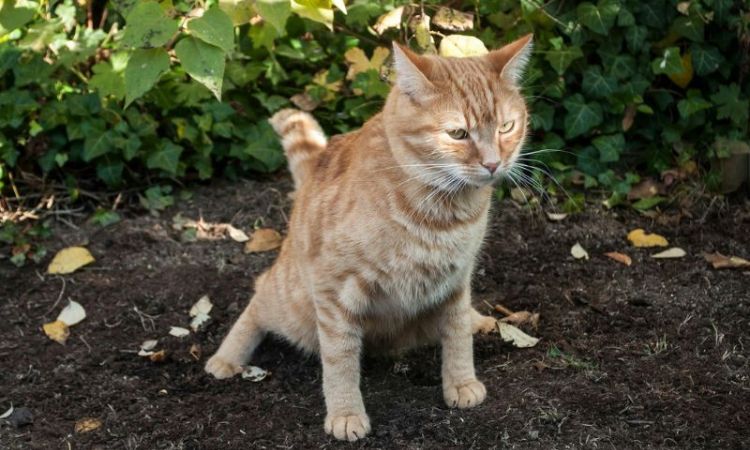
Preventing Blood in Cat Stool
Keeping your cat’s digestive health in check is key to reducing the risk of blood in their stool. While not all cases can be prevented, there are several practical steps you can take:
- Maintain regular veterinary care – Keep vaccinations, deworming, and parasite prevention up to date.
- Feed a high-quality diet – Ensure your cat gets complete, balanced nutrition suitable for their age and health.
- Introduce dietary changes gradually – When switching foods, transition slowly over 5–7 days to avoid upsetting their digestive system.
- Keep toxins out of reach – Secure household trash, store medications safely, and avoid plants, foods, or chemicals that are harmful to cats.
- Minimize stress – Create a calm home environment; stress can trigger digestive upset.
- Monitor litter box habits – Regularly check stool consistency, frequency, and color so you can catch early signs of digestive issues.
- Prevent overeating and inappropriate eating – Avoid sudden treats, table scraps, or allowing your cat to hunt potentially harmful prey.
By following these steps, you can help support your cat’s gut health and reduce the risk of bloody stools.
If you notice blood in your cat’s stool, it’s crucial to act promptly. While there are a number of potential causes, ranging from mild to serious, a veterinary visit is always the safest course of action. Early diagnosis and treatment can make all the difference in ensuring your cat gets the care it needs to recover and stay healthy.



